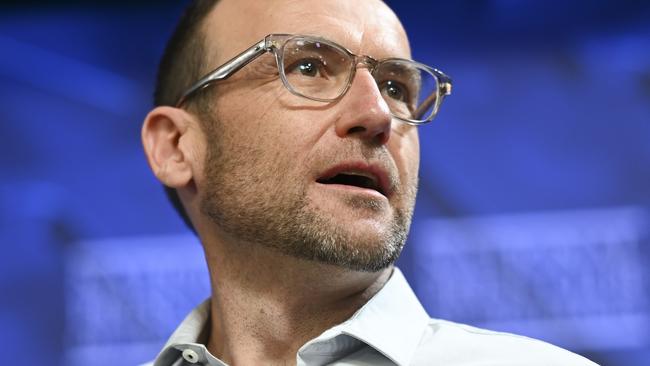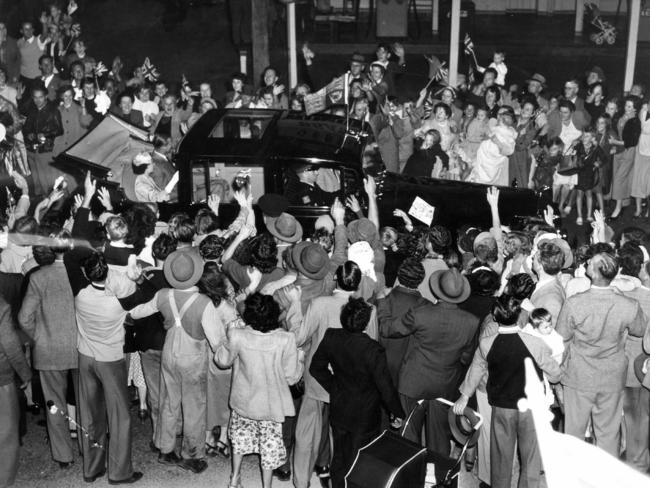Queen Elizabeth II was the world’s most significant leader – badly-timed calls for a republic do the movement a disservice | Paul Starick
A badly-timed tweet hours after the death of Queen Elizabeth II reflects poorly on the Greens leader – and won’t help his cause, writes Paul Starick.
Opinion
Don't miss out on the headlines from Opinion. Followed categories will be added to My News.
The Queen was a bulwark of stability in a tumultuous time. Her death removes a pillar of reassuring certainty in a world wracked by the extraordinary turmoil of a pandemic, soaring living costs, European war and China’s ominous rise.
During her 70-year reign, Queen Elizabeth II became the world’s most significant leader of her time. Arguably, she is the most significant female leader the world has known – history will be that judge.
Monarchists and republicans alike admired and respected her lifetime of service and immense stoicism. In a world of gender power imbalance and glass ceilings, the Queen was an inspiring role model of female leadership.
The Queen consulted with 16 Australian prime minsters and 16 Governors-General served in her name. Another 15 South Australian premiers were in office during her reign.
At the time of her coronation on June 2, 1953, our longest-serving prime minister and premier were in office – Sir Robert Menzies and Sir Thomas Playford respectively.

The Queen was a constant throughout the Cold War, extending to the subsequent collapse of the Soviet Union. She presided over South Australia’s rapid industrialisation and gradual decline, capped by the 2017 closure of the Holden car manufacturing plant in the suburb named in her honour, Elizabeth.
Yet the time of her passing leaves a turbulent world exposed. The stability of her reign is removed when Europe is bracing for a freezing winter, with Russian gas supplies being deployed as an economic weapon by a belligerent Vladimir Putin.
His invasion of Ukraine unleashed an inflation surge, which central banks are desperately seeking to arrest with repeated hammer blows of interest rate rises.
The Queen’s aura extended from world leaders to people on the street. In a way that was impossible to define, she generated inspiration and a soothing calmness.
For some years, particularly in the immediate aftermath of the 1999 referendum, there was a widespread belief that Australia would transition to a republic after she died, particularly if Charles was to ascend to the throne.
A republic is now distant, at best. The significant respect for the Queen will endure and, to a degree, pass on to King Charles III.
In the immediate aftermath of her passing, it would be unseemly to speculate about when, if at all, the republican debate might be seriously revived in Australia.
Australian Greens leader Adam Bandt did himself and his party no credit by firing off a condolence statement on Twitter at 7.57am on Friday morning, ending by declaring: “Now Australia must move forward. We need Treaty with First Nations people and we need to become a Republic.”
Rest In Peace Queen Elizabeth II.
— Adam Bandt (@AdamBandt) September 8, 2022
Our thoughts are with her family and all who loved her.
Now Australia must move forward.
We need Treaty with First Nations people, and we need to become a Republic.
This breathtaking disrespect and appalling timing cheapens Mr Bandt as a leader and diminishes the republican cause, whatever its merits.
There is an appalling sense of dancing on the grave of a world figure who was loved, admired and respected by countless people, including many fervent republicans.

Regardless, the November 6, 1999, republic referendum extinguished serious contemplation of the issue for a generation, at least.
Prime Minister Anthony Albanese was 36 at the time of the vote. Premier Peter Malinauskas had turned 18 just three months before.
Mr Albanese was born just 16 days before the Queen arrived in Australia for her 1963 Royal visit, which was from February 18 to March 27.
This was the second of her seven visits to South Australia. At the first, the Queen and the Duke of Edinburgh arrived on March 18, 1954.
Some 200,000 people lined the route from Parafield Airport, where they were met by the-then Mr Playford, to Government House.

The next day, March 19, the Royal progress through Adelaide was attended by an estimated 300,000 people. That afternoon, the Royal couple went to the Morphettville races and watched a cricket match at Adelaide Oval. During the next week, they visited Whyalla, Port Lincoln and Renmark and saw children gathered at Wayville showgrounds. The Queen opened state parliament.

The visit was just days after the worst earthquake in SA’s history. The March 1 earthquake registered 5.25 on the Richter scale. Until the Newcastle earthquake of 1989, the 1954 Adelaide quake was the most damaging recorded in Australia.
The St Francis Xavier Cathedral in Wakefield St was badly damaged; at the new Blackwood Community Hospital every room apart from the operating theatre was affected and the GPO’s clock face was damaged. The damage bill in today’s figures was about $150m.
The Queen’s 1954 SA visit offered hope and inspiration after seismic changes. Her passing comes as we experience tectonic geopolitical shifts, that will no longer be buttressed by the stability of the most significant leader of our time.





